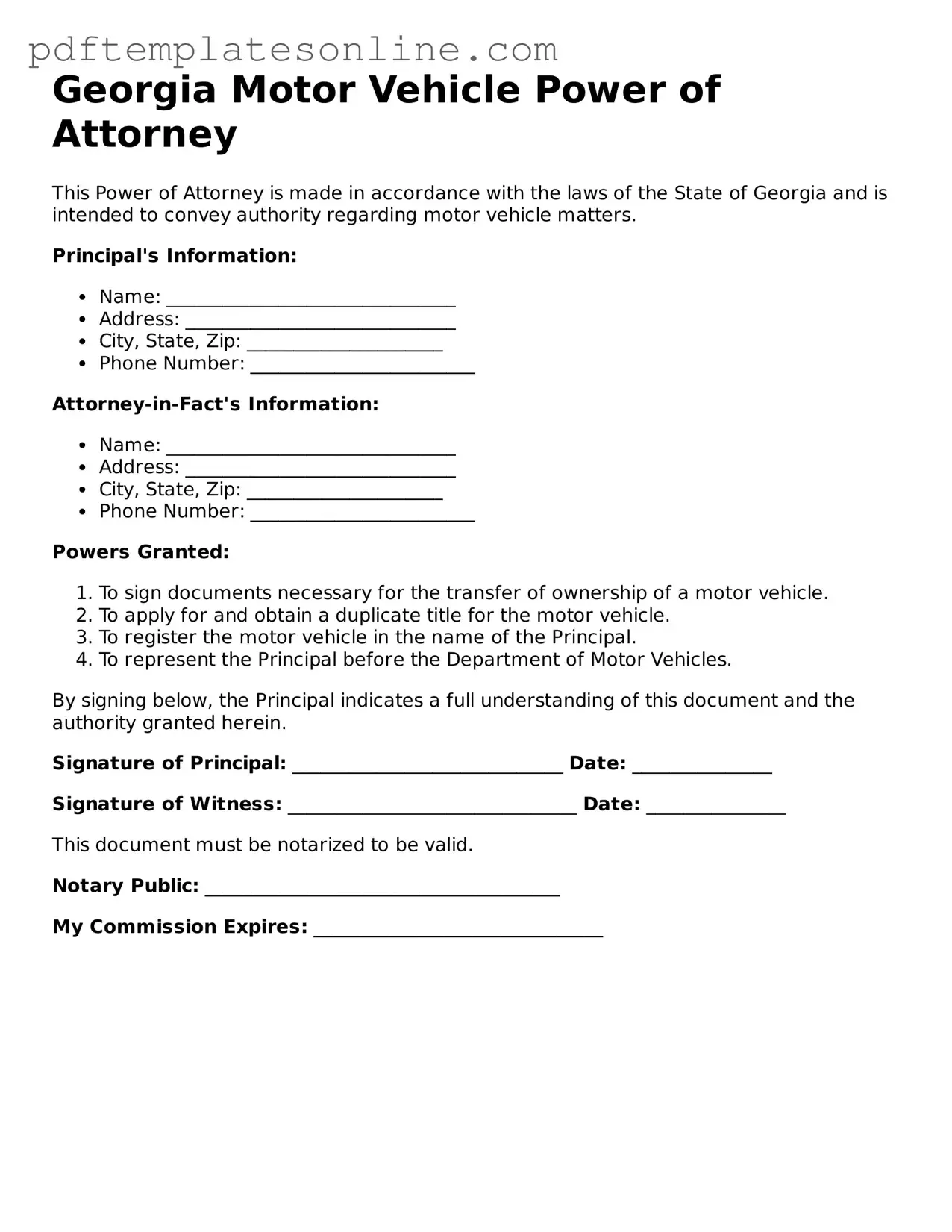Official Georgia Motor Vehicle Power of Attorney Document
The Georgia Motor Vehicle Power of Attorney form is a legal document that allows one person to authorize another individual to act on their behalf regarding motor vehicle transactions. This form is particularly useful for handling tasks such as transferring ownership, registering vehicles, or obtaining title documents. By using this form, individuals can ensure that their vehicle-related matters are managed efficiently, even if they are unable to attend in person.
Access Motor Vehicle Power of Attorney Editor Now
